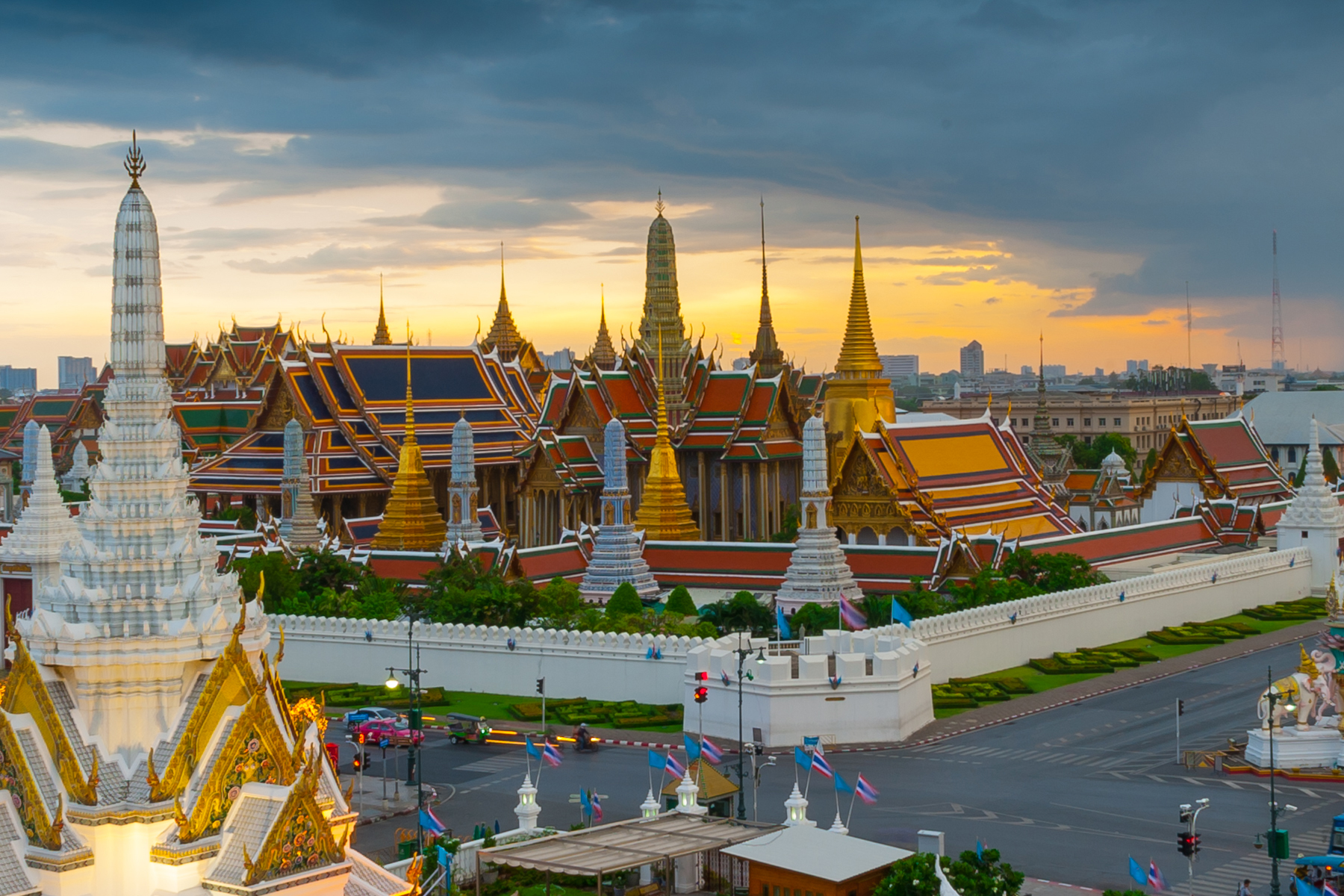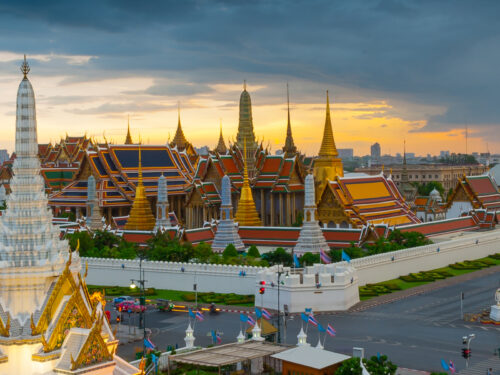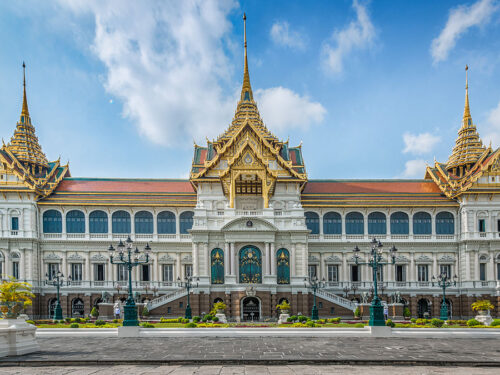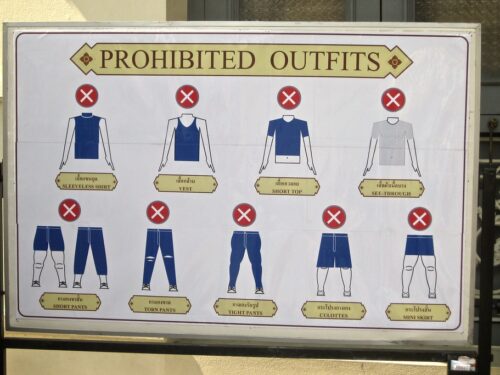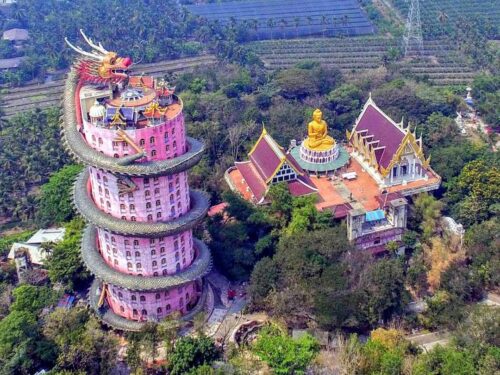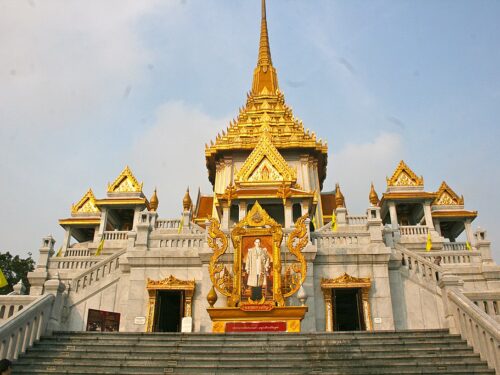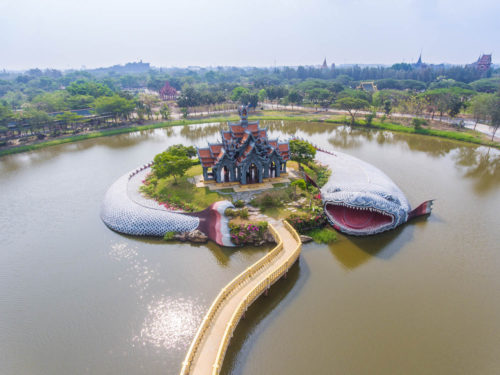The Grand Palace of Bangkok
If you are planning a trip to Thailand, the Grand Palace of Bangkok can’t be missing from your list of visits. Discovering this destination will give you a completely immersive experience of Thai culture and architecture.
Located in the heart of Bangkok, the Grand Palace is a complex of buildings, consisting of over 100 buildings and structures which you could spend an entire day exploring. The palace is also home to Wat Phra Kaew (the temple of Emerald Buddha), regarded as the most sacred Buddhist temple in Thailand.
Get ready to indulge yourself in discovering more about this grand and emphatic palace in Thailand!
French version of this article:
History of the Grand Palace of Bangkok
This magnificent Grand Palace complex represents 200 years of royal history and architectural experimentation.
After King Rama I ascended to the throne in 1972, The Grand Palace complex was established in Bangkok. It is believed that he considered the former capital unsuitable so he moved the royal court from Thonburi on the west bank of the Chao Phraya River to Bangkok on the east for protection.
During the reign of King Vajiravudh, the royal residences were moved out of the Grand Palace. Because of this event, Chakri Maha Prasat (Grand Palace Hall) fell into disrepair. In 1932, Rama VII (King Prajadhipok; ruler from 1925 to 1935) called for a major renovation of the hall, but there weren’t enough funds, and the back section of the building had to be demolished.
The Grand Palace of Bangkok was also where Rama VIII (King Ananda Mahidol; ruler from 1935) was mysteriously killed in 1946. He was found murdered in his bed with a gunshot wound on his head.
In October 2017, the Grand Palace complex and adjacent Sanam Luang served as the setting for King Rama IX’s funeral, possibly one of the most ornate funerals in modern history.
The current king, Rama X, had his coronation ceremony held in the large Amarindra Hall in 2019.
Nowadays, it’s only used on ceremonial occasions, but it remains the city’s biggest tourist attraction and a pilgrimage destination for devout Buddhists as well as curious foreigners.
Architecture of the Grand Palace of Bangkok
In shape, the palace complex is roughly rectangular and covers an area of 218,000 square meters, and is surrounded by four walls, 1900 meters in length.
Most of the architecture, either royal or sacred, is classified as Ratanakosin, which is an old-Bangkok style. Visitors are allowed to wander around the Grand Palace of Bangkok and four of the remaining palace buildings, which are famous for their royal bombast.
The biggest palace building in the royal residence open to the public is the triple-winged Chakri Maha Prasat (Grand Palace Hall). Completed in 1882 following a plan by Singapore-based British architect John Clunish, the exterior shows a harmonious blend of Italian Renaissance and traditional Thai architecture.
It is believed the top of the palace was a dome in the original plan, but Rama V was persuaded to go for a Thai-style roof instead. Many believe the king was showing Thai dominance over European colonialism at that time by crowning his Western-inspired palace hall with a Thai-style roof.
The tallest roof in the center contains the ashes of Chakri dynasty kings while the flanking of the roof enshrined the ashes of the many Chakri princes who failed to inherit the throne. The last building to the west is the Ratanakosin-style Dusit Hall. Initially, this structure served as a venue for royal members and later as a royal funerary hall.
The impressive interior of Bangkok’s Grand Palace is still used for significant ceremonies such as coronations.
Tickets and other practicalities
The ticket costs 500 baht for each Foreigner. It includes access to Wat Phra Kaew and Queen Sirikit Museum of Textile, which is located within The Grand Palace compound.
The Grand Palace of Bangkok is open daily from 8:30 AM to 3:30 PM. You can enter the Grand Palace complex through the third gate from the river pier.
Dresscode
As with many of Bangkok’s sights, you will need culturally appropriate clothes to enter the Grand Palace. Visitors should wear long skirts/trousers and sleeved shirts, to cover the upper arms and knees.
Vests, see-through tops and short clothes won’t be allowed inside the Grand Place. Torn pants, tights pants, bike pants or mini skirts are also prohibited in the Temple or place of worship.
But, if you arrive at the attraction without knowing about this dress code, a booth at the entrance will provide clothes to cover you properly for a refundable deposit.
How to get there
By Boat
This is one of the most used ways to The Grand Palace.
Visitors can take an express boat to Tha Tien (N8) along the Chao Phraya. Then you walk past the food stalls until you get to a large road junction. Here, slightly look to your right and you can see your destination, The Grand Palace of Bangkok
By Bus
There are some buses that go straight to The Grand Palace and Wat Phra Kaew: 1, 3, 9, 15, 25, 30, 32, 33, 43, 44, 47, 53, 59, 64, 80, 82, 91, 203, 503, 508, 512.
By Private car
If you travel by private car, you can find these parkings: Wat Mahathat, Tha Maharaj soi Thapphen, beside City Pillar Shrine, Rajadamnern Road Car Park, Soi Wat Pho, Wat Rakang Parking Building.
By Tuk Tuk
A little tip, unless you are used to tuk-tuk bargaining, it might end up costing you more than a taxi to get there. If possible, arrange a reasonable price with a little bargaining.
You may also like:
